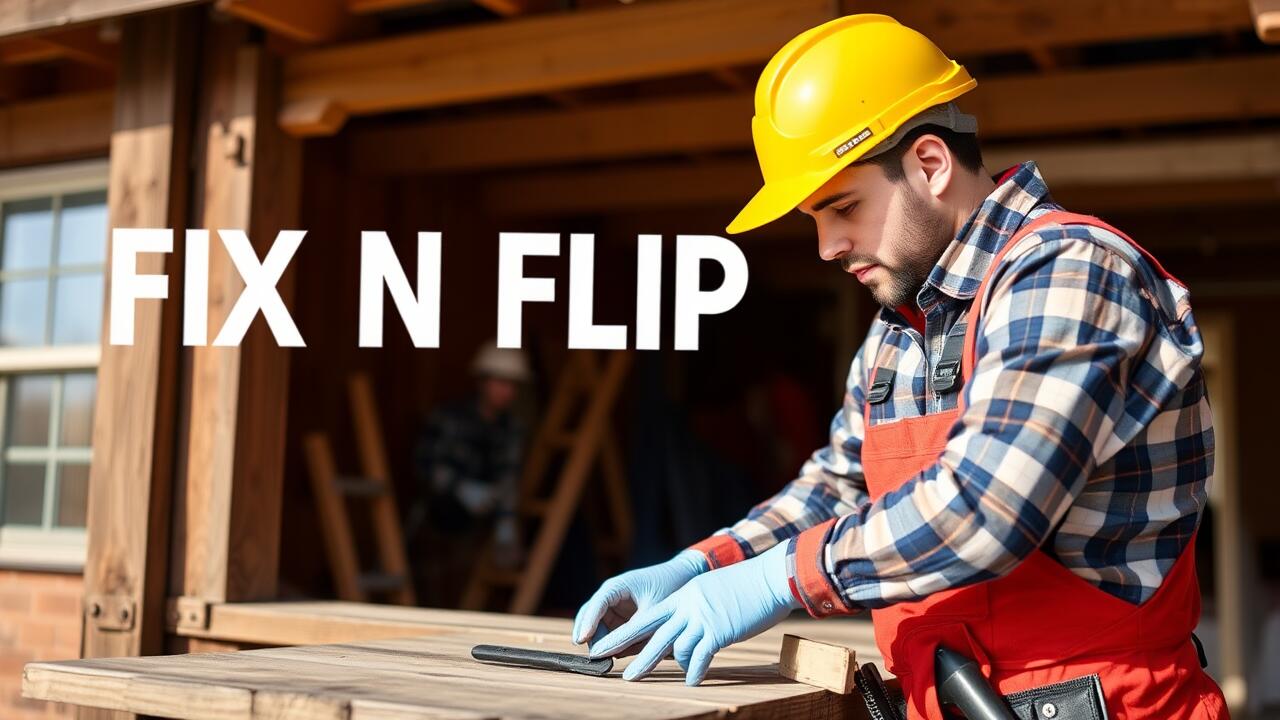
Table Of Contents
DSCR Loans Maryland offers specialized "Fix n Flip Loans" designed for real estate investors looking to renovate and resell properties quickly and profitably. Our competitive financing options provide the necessary capital to purchase distressed properties and cover renovation costs, enabling investors to maximize their return on investment. With flexible terms and a streamlined application process, we prioritize the unique needs of property flippers, ensuring they have access to the funds required to turn potential properties into profitable ventures. Whether you're an experienced investor or just starting out, DSCR Loans Maryland is here to support your property flipping goals with reliable and responsive financing solutions.
Costs Associated with Fix and Flip Loans
Investors engaging in fix and flip projects should be aware of the various costs tied to obtaining loans. These loans often come with higher interest rates compared to traditional mortgages due to the increased risk associated with short-term financing. Loan origination fees, appraisal costs, and inspection fees can add significant upfront expenses. It's crucial to account for these fees in the overall budget to ensure profitability.
In addition to direct costs from the loan, there are other expenses that can impact the project's financial viability. Property renovations, materials, and labor can quickly escalate, especially if unexpected repairs arise during the fixing process. Investors should also factor in holding costs, such as property taxes, insurance, and utilities, which accumulate while the property is being renovated. Being proactive in budgeting for these expenses helps maintain a clearer perspective on potential returns.
Breakdown of Fees and Interest Rates
Understanding the costs associated with fix and flip loans is crucial for any investor. These loans often come with various fees, including origination fees, appraisal fees, and closing costs. Origination fees typically range from 1% to 3% of the loan amount, while appraisal fees can vary significantly depending on the property's location and complexity. Lenders may also charge upfront underwriting fees. In addition, closing costs can include title insurance and recording fees, which can further increase the overall expense of securing the loan.
Interest rates for fix and flip loans can differ widely based on factors such as credit score and the lender's criteria. While traditional mortgage rates may range from 3% to 5%, fix and flip loans often carry higher rates, sometimes exceeding 10%. This reflects the shorter loan term and the higher risk associated with these transactions. Investors need to carefully evaluate the total cost of financing when planning their projects to ensure they can still achieve a profitable return on investment.
Tips for Successful Fix and Flip Projects
Conduct thorough market research before purchasing a property. Understanding local real estate trends can help identify neighborhoods with growth potential. Analyze past sales data to determine property values and renovation costs. Focus on properties that are structurally sound but require cosmetic improvements. This approach can significantly decrease renovation time and costs.
Establish a comprehensive project timeline to monitor progress effectively. Break down tasks into manageable segments and set realistic deadlines. Utilize reliable contractors and ensure clear communication about expectations and budgets. Staying organized allows for a smoother renovation experience. Regularly review the project status to make necessary adjustments and keep to the planned budget.
Best Practices to Maximize ROI
Maximizing return on investment in a fix and flip project requires meticulous planning and execution. A detailed budget should include all potential costs, from acquisition to renovation. Accurate cost estimation helps prevent unexpected financial burdens. Prioritizing high-impact upgrades can significantly enhance property value while minimizing unnecessary expenditures. Select renovations that resonate with prospective buyers such as kitchen and bathroom remodels.
Conducting thorough market research is equally critical to achieving superior ROI. Understanding local trends ensures that properties are priced appropriately for potential buyers. Analyzing comparable sales in the neighborhood helps identify the most effective features to incorporate into the renovation. Networking with real estate agents can provide valuable insights into buyer preferences. Staying ahead of market shifts is essential for making informed decisions and maximizing the likelihood of a profitable flip.
Risks Involved with Fix and Flip Loans
Investing in real estate through fix and flip loans can be lucrative, yet it comes with a unique set of risks. Construction delays often lead to increased costs, making it crucial for investors to navigate the renovation process efficiently. Market volatility can also affect property values unexpectedly, which may result in a lower return than anticipated.
Additionally, miscalculating renovation budgets is a common pitfall that traps many investors. Underestimating repair needs or overlooking hidden issues can add significant expenses. Competition in the housing market can create pressure to sell quickly, sometimes leading to compromises on price or quality that ultimately affect profitability. Understanding these risks is essential for anyone looking to make the most of their fix and flip investment.
Common Pitfalls Investors Should Avoid
One major pitfall investors encounter is underestimating the costs associated with a renovation project. This often includes not just the obvious expenses of materials and labor but also unexpected repairs that may arise once work begins. Failing to account for these additional costs can quickly erode potential profits, leaving investors financially vulnerable. It’s crucial to create a detailed budget and include a buffer for unforeseen expenses to maintain a realistic financial outlook.
Another common mistake is neglecting to conduct comprehensive market research before purchasing a property. Investors sometimes rush into deals based on perceived potential, overlooking critical factors like neighborhood trends and property values. Without thorough analysis, it’s easy to overpay or choose a property that doesn’t align with market demands. Successful investors prioritize understanding their market landscape, helping them make informed decisions that align with their investment goals.
FAQS
What are Fix and Flip Loans?
Fix and Flip Loans are short-term financing options designed for real estate investors who purchase properties, renovate them, and then sell them for a profit.
What costs are typically associated with Fix and Flip Loans?
Costs can include loan origination fees, closing costs, interest rates, and other associated fees like inspections and appraisals.
How do interest rates on Fix and Flip Loans compare to traditional mortgages?
Interest rates on Fix and Flip Loans are generally higher than those on traditional mortgages due to the short-term nature of the loans and the higher risk involved.
What are some tips for a successful Fix and Flip project?
Key tips include thorough market research, setting a realistic budget, planning for unexpected expenses, and choosing properties in desirable locations.
What are some common pitfalls to avoid when using Fix and Flip Loans?
Investors should avoid overestimating property value after renovations, underbudgeting for repairs, neglecting to conduct proper inspections, and ignoring local market trends.



